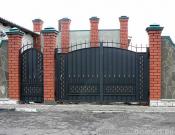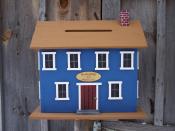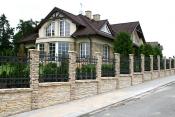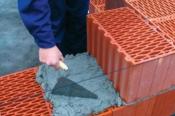Search
Login
Recommended
Ornamental and medicinal plants on the site. Bobovnik: types and conditions of cultivation
Bobovnik got its name due to the shape of fruits that look like beans. But the value of this plant is not in its fruits, but in its decorativeness. At the beginning of summer, many golden moth flowers bloom on the long hanging arms of the bobovnik bloom on the branches of the tree.
Deciduous shrubs are popularly called golden rain. However, behind the beautiful appearance of the plant hides its insidiousness all parts of the bean tree are very poisonous.
In the article we will try to answer the most frequently asked questions of gardeners: Is it possible to grow a bright woody plant in the garden? and How to organize the right care for bean bearer?
Content
- Bobovnik in the garden golden rain with the onset of summer video
- The healing properties of bean bob
- The main types of bean
- Bean planting: choosing a place, optimal soil composition and the sequence of planting
- Bobovnik: growing and caring for a plant
- Bean breeder breeding
Bobovnik in the garden golden rain with the onset of summer
The birthplace of bean birch tree is considered to be the Mediterranean, as well as some areas of Central and Southern Europe. In Russia, bean beet growing began in the nineteenth century. However, today it is rather rare to meet a tree with hanging bunches of flowers.

Bobovnik is an unpretentious plant in its care, but it can not withstand long harsh winters, so it is planted mainly in the southern or central strip of Russia and must be insulated for a period of cold weather.
Garden bobovnik has an ovoid crown. A distinctive feature of the plant, it grows quite quickly (growth per year can reach 30-40 cm). Almost all species of bean birch tree have several trunks covered with a light brown, greenish-grayish bark. Sagging shoots with triple, alternately arranged leaves grow on the trunks.
At the end of May and the beginning of June, the bean-tree blooms profusely and is covered with bright yellow or golden flowers, collected in hanging brushes. The impression of a golden rain. Flowering lasts about 25 days, after which the petals fall and form fruits that look like beans.
The flowering tree has a stunning appearance and is often used by landscape designers when arranging parks, gardens, front gardens, terraces, lawns and hedges. Golden rain looks beautiful against the background of conifers (thuja, spruce or juniper) or plants of dark green color.
The bright yellow color of a flowering plant goes well with delicate purple or blue flowers.

A very spectacular alley is obtained, along which bean bears are planted with golden tassels hanging over the heads of passers-by, dipping them in bright, sunny clusters of flowers.

Experienced gardeners skillfully apply the correct technique of pruning the branches of a weeping plant, giving the crown a decorative shape and stimulating a more plentiful flowering of bobovnik.
The healing properties of bean bob
Before describing the available medicinal properties of the beaver, it is necessary to once again recall that:
Bobovnik is a poisonous plant, since all its parts (leaves, flowers, fruits, shoots and the trunk) contain the alkoloid cytisine. Therefore, planting a plant near playgrounds and in garden areas, where children are often extremely undesirable!
It is impossible to produce independently and use without solutions a doctor any solutions, decoctions, lotions and preparations based on bobovnik.

Medicinal preparations from bobovnik, namely from cytisine, are used to stop breathing during operations, asphyxiation and shock. The cytisine alkoloid promotes reflex excitation of the respiratory center and an increase in blood pressure.
Pills made using bobovnik facilitate the process of smoking cessation.
Any medicinal preparations from bobovnik have a number of contraindications (atherosclerosis, peptic ulcer, hypertension, pulmonary edema, bleeding), therefore they should be taken only after agreement with the doctor.
The main types of bean
Bobovnik has two natural species and one hybrid, so it is generally accepted that the plant is represented by three species:
anagirol bean (broom, golden rain);
alpine bean;
boberer of Waterrera.
Tree golden bean birch grows up to seven meters high. The plant has a narrow, irregular shape, crown. The trunks of the tree are greenish-brown, the bark is smooth. Growing young shoots are erect, but over time they fall and leaves appear on them elliptical or obovate. The leaves are bicolor: the upper part is dark green, and the lower grayish (with a slight edge). The flowers are collected in inflorescences (up to 30 flowers can be on one hanging brush).

Anagirol bean beetle is the most winter-hardy species. The plant is able to withstand temperature drops of up to 25 degrees. In addition, this type is well tolerated by gas pollution, therefore it is often used in the decoration of city parks.
Alpine bobovnik in the middle zone of Russia usually does not grow more than three meters in height. Although in his homeland, in the mountains of southern Europe, it can reach ten meters. The flowers and leaves of the plant have the same shape as an anagirolis bean, the difference is in the fruits. Alpine bean bean smooth, without fringe and villi.

Alpine bean tree cannot boast of a pleasant aroma, which is inherent in the anagirolistic form, and good tolerance of frost. An alpine bean tree blooms in early or mid-June, but after a very harsh winter, flowers on the plant may not appear.
Voberera Bobovnik (bobovnik intermediate) a hybrid of the two previous species. The height of the tree reaches 4-5 meters when grown in the southern lane and 1 m in the middle lane. The main branches of the plant are funnel-shaped, erect, and lateral hanging. The beaver's crown is wide and spreading, has a strong branching.

Voberera bobovnik has not deep fleshy roots, long leaves of dark green color and hanging inflorescences (length 50 cm and more) with fragrant flowers. Voberer bobovnik is relatively winter-hardy (withstands frost up to 23 degrees), but with severe freezing it slows down growth and does not bloom.
Bean planting: choosing a place, optimal soil composition and the sequence of planting
The bean planting area should be light or in partial shade. It is important that the bean tree does not grow on cold drafts, otherwise the plant may not bloom at all. Lack of sunlight can lead to shedding of leaves and poor flowering.

Tree and shrubbery groups take root better and bloom more brightly in central Russia than single plantings planted on open ground.
To the composition of the soil, the bean tree is not too picky. The plant gives good growth on rich, calcareous soils. He feels quite well on slightly acidic loamy and sandy soil. The main condition is that the soil must have good drainage and the water should not stagnate, as the bobovnik does not tolerate excess moisture.
Consider the sequence of planting operations. To plant a bean bower you will need:
- planting material bobovnik in the container;
- shovel;
- cord;
- pole;
- trowel;
- compost.
The roots of container seedlings should not braid the pot, as they will have to be damaged during transplanting, and it will be more difficult for the bean tree to take root in a new place

Stages of planting a beanbill:
- It is necessary to dig a hole, the volume of which is twice as large as an earthen coma of a seedling.
- The earth must be mixed with compost.
- Carefully remove the bobovnik from the pot and spread its roots. If the earth in the pot was dry, then before planting the seedling must be watered.
- A pole for a beaver is driven into a pit.
- Bobovnik must be placed in a pit to the full depth of an earthen coma.
- The pit is filled with enriched soil.
- The surface of the earth must be compacted and watered.
- The trunk of the plant must be tied to a support with a rope, not too tight.
- It is advisable to mulch the soil near the trunk with compost.
Bobovnik: growing and caring for a plant
If there is a desire to grow a very beautiful and unpretentious plant on a summer cottage, then a bean tree will be a good option. Planting and caring for the plant do not require special skills, and even beginner gardeners can get bright golden rain.
Top dressing, watering and weeding
Bobovnik drought-tolerant plant. Water it only when the topsoil is completely dry.
It is advisable to feed the bean bilberry twice a year: in the spring with nitrogen fertilizers, and in the fall with phosphorus-potash. To process the plant with organics, diluted organic fertilizers must be used, since highly concentrated ones can burn the beaver root system, which is located on the surface.

Periodically, the soil around the bobbins must be weeded and rid of weeds. But weeding should be carried out carefully, since the roots of the plant are not too deep and they are easy to damage.
Pests and diseases of the bean gardener
Due to the fact that the leaves, fruits and flowers of the bean beet are poisonous, the plant is rarely attacked by pests and diseases.

In prolonged, humid and warm weather, powdery mildew can affect bobbins. Care for a diseased shrub consists in treating the plant with biological fungicides. The disease manifests itself in a powdery gray coating on the leaves of the bean tree.
Bean pruning and winter shelter
At the bean tree, it is necessary to periodically remove old and weak branches. It is important to remember that the plant does not tolerate excessive pruning.

When forming a beautiful beaver crown, you must adhere to the following rules:
- the garden bobovnik looks most spectacular like a tree with one main trunk, this allows you to advantageously expose the hanging branches and inflorescence brushes;
- the trunk, cleared of branches and a balanced crown should be formed gradually (over three years) if large branches are cut at the bean tree, hollows may form;
- a dead shoot does not need to be cut to living tissue in order to preserve the natural beaver barrier as much as possible;
- if the bean tree is used in the garden in the formation of a tunnel or hedge, then you need to trim the branches of the plant a little bit, choosing the weakest;
- if the rejuvenation of the old bobovnik did not give results (a beautiful and well-groomed crown was not formed, the plant did not grow), then it is better to replace it with a young one.
Formative pruning should be done on time for young plants, as adult plants are difficult to tolerate.
Despite the fact that bobovnik belongs to frost-resistant crops, it needs shelter and warming for the winter. This primarily concerns young plants.
Prepare bean for wintering should be from the end of October. The plant must accumulate moisture in order to successfully tolerate the cold. Therefore, in October it is necessary to beobovnik more often and more abundantly; this applies to dry autumn.
An adult plant can survive wintering and without shelter it is enough to remove snow from the bobovnik so that the branches do not break. It is better to shelter a young plant for the winter period. To do this, the sprawling branches of the young bean tree must be carefully tied with a rope, and spruce or pine branches should be placed inside the tree. Above the bobbin you can set a kind of hut or frame, which is covered with burlap.
In spring, it is necessary to remove the shelter gradually, starting with airing the bush. In cloudy weather it will be possible to remove the frame, and after a couple of days and the spruce branches. So the plant quietly adapts to sunlight.
Bean breeder breeding
Bean breeder propagates, like most plants, seeds and vegetatively. Plants grown from bean birch seeds take root well. For planting, it is better to use seeds collected from plants acclimatized in this region.
In October, the collected seeds are planted in boxes (any unheated room is well suited). After germination, small seedlings are planted in different pots, and in the spring they can be transplanted to a permanent place.
Seeds can be planted in open ground in spring. To do this, before planting, long stratification can be replaced by faster processing: rub the peel of the seeds with sandpaper or treat with sulfuric acid for half an hour. A young plant usually blooms in the third year.
A vegetative method of propagation of bean broom can be carried out:
- dividing the bush;
- cuttings (hybrid species reproduce only with the help of cuttings);
- propagation by layering;
- vaccination.

In the garden, bean beetroot is often propagated by layering. In spring, young shoots should be sprinkled with earth and left in this condition until next year. After a year, the rooted escape can be transplanted to a permanent place.

Garden bean plant is unpretentious and, when creating optimal growing conditions, can delight owners with plentiful, bright flowering for decades.





